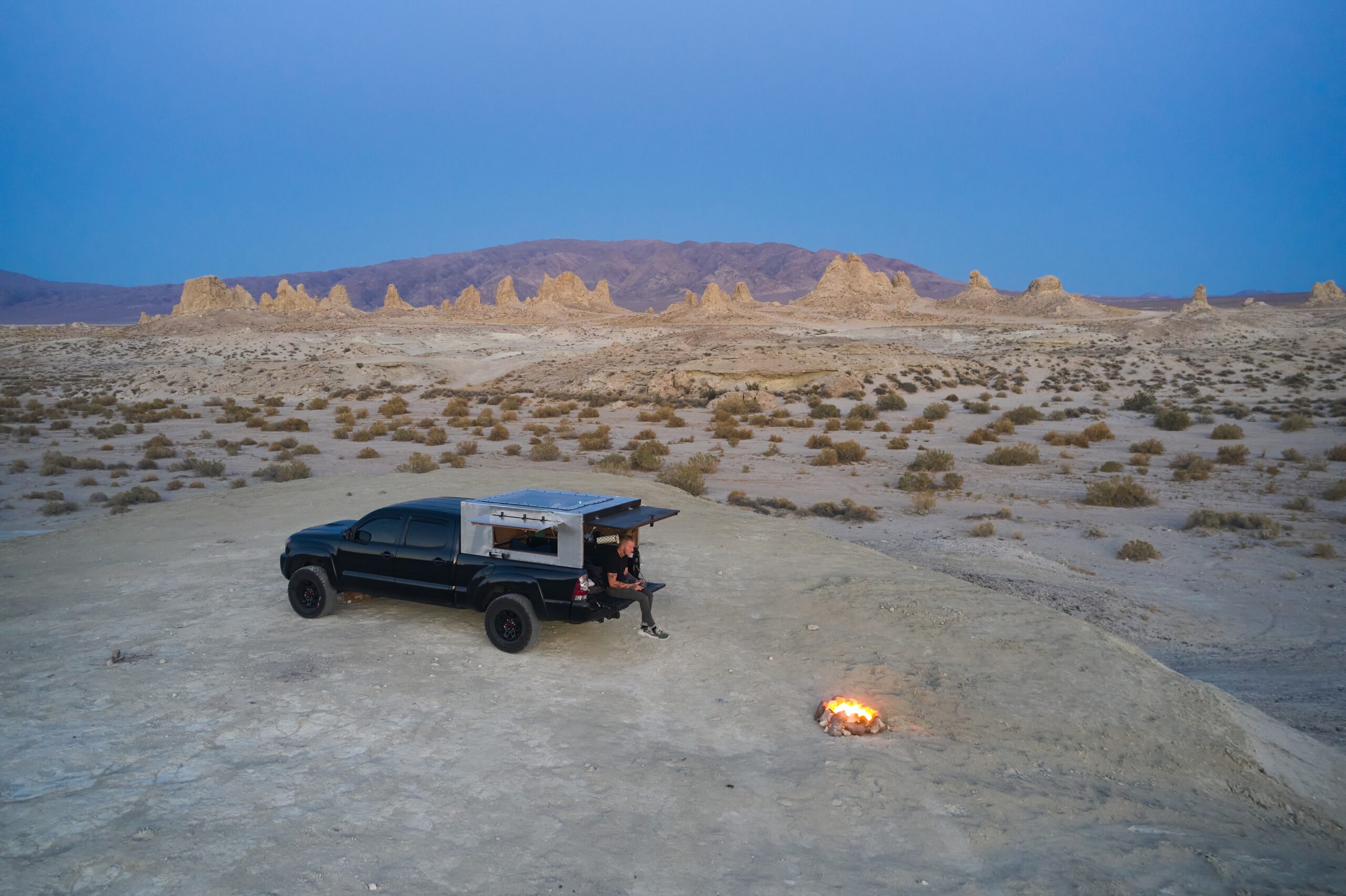If you have a pick-up truck instead of an SUV, you have space enough to live in, but you will have to take some extra steps (and incur extra costs) to convert the bed of the truck into a living space. The benefit to a truck over an SUV, though, is that you will have more living space in almost every case. It’s also much easier to take a truck off-road, so if you want to live out of a vehicle while you travel and explore, a truck is probably the better option.
And while mid-size SUVs can haul small campers, trucks can haul bigger ones (up to and including tiny houses on wheels if you have a full-size truck), making a truck a better place to start if you plan on upgrading to a larger accommodation down the road.
Note: This section is about people living stealthily in the back of their truck with no more than a camper shell over the bed. There is a separate post, in the camper section, about truck slide-ins.
Think you can’t afford to buy a camper shell for your truck? Paul Elkins, who made a bicycle camper from corrugated plastic campaign signs, is back—this time with a truck camper shell made from corrugated plastic. Anyone can make one with some large signs (or purchased panels) and a small bit of scrap wood and basic hand tools.
Although he doesn’t have it inside this topper, you can use the silver bubble wrap insulation (he uses it in the bike camper) to help insulate the topper and also keep any light from inside showing out (making it stealth). You could put a window cutout in the topper, next to the cab, to allow you to access the inside of the cab for storage or as an emergency exit. And you can build it out more fully inside the bed, the way other people have theirs set up for long-term living. In the bike camper, Paul used the corrugated plastic and zip ties to make shelves and drawers, so don’t throw away your scraps; you can use them to build storage containers to fit around the wheel well and other equipment, and you only need an exact-o knife to do it.
And if you’re somewhere where you don’t have to be stealth, like a campground, Paul has a way to attach a tarp to the back of the topper to make a porch or an enclosed space for a shower.
His website has some still pictures that show the wood framing of the door and the inside better: https://elkinsdiy.com/coro-truck-canopy/
This tidy build is really setup for camping, not living in, but with the addition of a console down the side of the truck, you could have space enough for cooking inside the truck (or you could have a pull out kitchen like in the minivan video for cooking outside). Very little skill is needed to build this and the costs are low if you already have a medium-size (or larger) truck with a camper top.
This truck build features a high-top shell, which allows most people to have an adequate amount of headspace to sit up on a bed. It also shows how the carpentry bits were achieved. It doesn’t require a whole lot of carpentry, especially if you want to leave out the rear wall. There was room to add more insulation, which I would definitely suggest if you are going to be living in the truck for a while, and especially if you are somewhere cold (although insulation will also keep the temperature a bit lower during the day in the summer, too).
She has it decorated to make it feel homey, which is important if you’re going to be living in the space for a while. Right now she has her table set up to be decorative, but there is room to store a small stove and cooking implements on it. There’s also room for a water tank next to the door and you can probably squeeze a generator in there somewhere as well (it might have to ride in the cab and run the electrical cords through the back window). Bedding can be stored behind the couch during the day and plastic bins under the couch can hold clothing and toiletries.
This more robust truck build requires quite a bit of skill, as it features a serious electrical set-up, plumbing, and custom woodworking, but it has pretty much everything you could want in a mobile living space. The cost for materials was $5,000, or about what you would pay for a decent small used camper. The benefit of this buildout over a camper is that you don’t have a trailer to have to park, or haul through a busy city, and you can stealth camp in this.
Don’t have a truck or it’s not your preferred vehicle? Check out this post which explores all the other personal vehicles it’s possible to live out of: Driven By Savings: Living, Working, and Traveling in Your Personal Vehicle
Want to be a nomad, but living out of something as small as a personal vehicle is not your cup of tea? There are many more options available here: On the Road Again – Exploring Nomadic Housing Options


